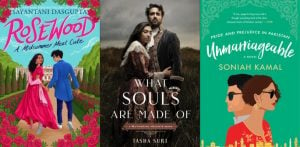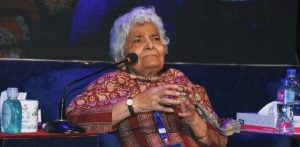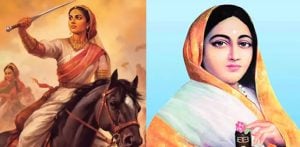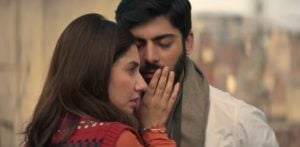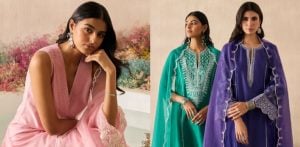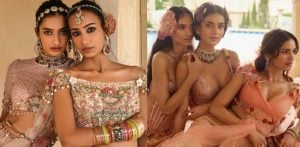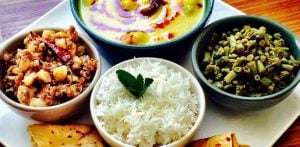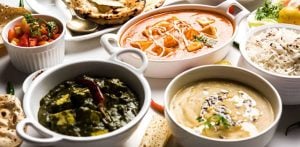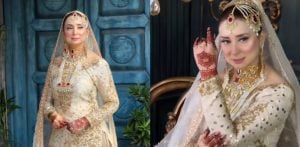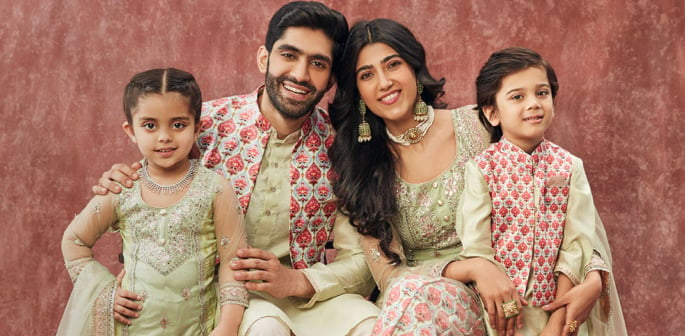Mother-daughter duos can match colours or patterns.
Cultural celebrations in South Asian families are as much about togetherness as they are about tradition.
Dressing in coordinated outfits adds a visual bond to these gatherings, reflecting shared heritage while creating beautiful family memories.
When done with care, coordinated dressing goes beyond matching clothes to showcase creativity and individuality.
The goal is to find a balance that feels stylish yet authentic, with comfort remaining a priority for both adults and children.
Carefully chosen colours, fabrics, and accessories can unify looks without feeling forced or overly staged.
With thoughtful planning, coordinated family fashion becomes a celebration in itself, blending cultural pride with personal flair.
South Asian festivals, weddings, and religious events often inspire elaborate outfit choices.
However, ensuring children’s looks are age-appropriate is essential for their comfort and enjoyment.
By choosing adaptable styles and breathable fabrics, parents can avoid unnecessary fuss during a long day of celebrations.
The right approach enables harmony across generations, ensuring everyone feels included while embracing their unique preferences.
Whether you prefer subtle coordination or bold statement-making styles, the key is finding a unifying element that ties the whole family’s aesthetic together.
Choose a Unifying Element
 A cohesive look starts with a shared colour palette that works for all family members.
A cohesive look starts with a shared colour palette that works for all family members.
Selecting two or three complementary shades can bring harmony without needing identical outfits.
Traditional hues like maroon, gold, or emerald create a festive feel, while pastels offer a softer, modern twist.
Prints and patterns, such as paisleys, florals, or ikat, can be subtly echoed in different pieces, perhaps in a parent’s dupatta, a father’s pocket square, or a child’s kurta border.
Matching fabrics, whether rich silk, lightweight cotton, or flowy georgette, helps maintain visual unity while ensuring comfort.
These details give the family a polished, intentional look that photographs beautifully.
Keep Kids’ Clothing Age-Appropriate and Comfortable
 While coordinated outfits are eye-catching, practicality must come first for children’s clothing.
While coordinated outfits are eye-catching, practicality must come first for children’s clothing.
Breathable fabrics such as cotton or silk blends help younger ones stay cool during long events.
Heavy embroidery, sequins, or stiff embellishments can be restrictive, so opting for lighter designs is best.
Easy fits like elastic waistbands, adjustable closures, and roomy trousers allow freedom of movement for active toddlers and young children.
Flared lehengas, dhoti pants, or loose kurtas work well for playtime while still looking festive.
For accessories, keep it minimal. Small bindis, matching hairbands, or soft turbans add charm without discomfort.
Create Intergenerational Harmony
 Coordinating across generations means finding styles that work for each person’s age and role.
Coordinating across generations means finding styles that work for each person’s age and role.
Mother-daughter duos can match colours or patterns, with mothers choosing sarees or lehengas and daughters wearing Anarkali frocks or pattu dresses.
Father-son outfits work well with kurtas in the same colour or matching Nehru jackets for a smart, traditional look.
Siblings can dress in similar silhouettes, like lehengas in different complementary shades or kurtas with varied embroidery patterns.
These small but thoughtful touches help the whole family appear connected without losing individuality.
By tailoring the level of coordination to each relationship, the overall look feels natural and inclusive.
Add Creative Touches
 Accessories can be the simplest way to bring a coordinated theme to life.
Accessories can be the simplest way to bring a coordinated theme to life.
Matching dupattas, scarves, or jewellery tones creates visual links between outfits without overpowering the design.
Coordinated footwear in traditional styles can also be a fun detail for family portraits.
If complete matching feels too formal, consider pairing family members, such as mother and daughter sharing a colour theme while father and son match prints.
Another option is to use one recurring motif, like a border pattern or neckline detail, across everyone’s clothing.
Layering pieces such as vests, jackets, or shawls in the chosen family colour can also add warmth and style while accommodating changing weather.
Practical Tips for Stress-Free Coordination
 Planning can save both time and money when dressing the whole family.
Planning can save both time and money when dressing the whole family.
Shopping for festival combo deals or special “family set” collections makes it easier to achieve a unified look.
Mixing adult outfits with children’s versions from the same designer can simplify the process.
For a budget-friendly option, DIY customisation works well.
Adding lace borders, trims, or a shared motif at home can unify looks without requiring bespoke tailoring.
Sticking to a comfortable fit for everyone ensures the day remains enjoyable from start to finish.
With a little creativity, coordinating outfits becomes a joyful pre-celebration ritual rather than a stressful task.
The Joy of Dressing Together
 Coordinating family outfits for cultural celebrations is more than just a visual statement.
Coordinating family outfits for cultural celebrations is more than just a visual statement.
It’s an emotional connection to heritage and togetherness.
By focusing on comfort, style, and a few shared design elements, families can achieve harmony without compromising individuality.
These thoughtful details turn simple clothing choices into lasting memories, captured in photographs and cherished for years.
Whether subtle or bold, the shared effort reflects love, unity, and pride in cultural traditions.
Dressing together becomes not just a part of the event, but an experience that strengthens family bonds.
The right planning ensures everyone looks and feels their best throughout the celebration.


